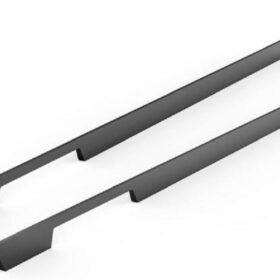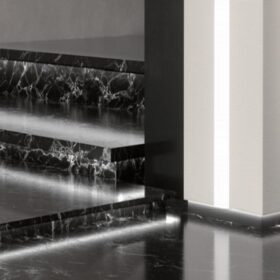The Ultimate Guide to Aluminium Alloy Handles
The Ultimate Guide to Aluminum Alloy Handles: Enhancing Durability and Aesthetics
In today’s highly competitive manufacturing landscape, the choice of materials plays a pivotal role in determining the performance and longevity of products. Amidst the myriad of options available, aluminum alloys have emerged as a preferred material for handles due to their exceptional strength, durability, and aesthetic appeal. To guide manufacturers and designers in harnessing the full potential of aluminum alloy handles, the “Ultimate Guide to Aluminum Alloy Handles” serves as an invaluable resource.
Properties and Benefits of Aluminum Alloys for Handles
Aluminum alloys are renowned for their combination of lightweight, high strength, and excellent corrosion resistance. These properties make them an ideal choice for handles that require both structural integrity and resistance to harsh environments. The alloy’s ability to be anodized further enhances its corrosion resistance, extending its service life.
The Versatility of Aluminum Alloy Handles
The versatility of aluminum alloys allows for a wide range of handle designs. Manufacturers can customize handles based on specific application requirements, whether it’s for machinery, tools, or consumer products. The material’s malleability enables complex shapes and intricate details, resulting in ergonomic and visually appealing handles.
Applications of Aluminum Alloy Handles
Aluminum alloy handles are found in a diverse array of industries, including:
Machinery: Industrial machinery handles require durability and resistance to wear and tear. Aluminum alloys meet these demands while also providing a comfortable grip for operators.
Tools: Hand tools and power tools benefit from the lightweight and strength of aluminum alloy handles, which reduce user fatigue and enhance productivity.
Consumer Products: Aluminum alloy handles are frequently used in products such as cookware, furniture, and appliances. They combine aesthetics with functionality, delivering both style and durability.
Design Considerations for Aluminum Alloy Handles
To optimize the performance of aluminum alloy handles, several design considerations should be taken into account:
Load-Bearing Capacity: The handle’s design must ensure it can withstand the anticipated loads without compromising structural integrity.
Ergonomics: Handles should be designed to fit comfortably in the user’s hand, minimizing fatigue and promoting ease of use.
Surface Finish: The surface finish of the handle is crucial for aesthetics and functionality. Anodizing or powder coating can enhance durability and provide a pleasing appearance.
Conclusion
The “Ultimate Guide to Aluminum Alloy Handles” provides a comprehensive understanding of the material’s properties, versatility, applications, and design considerations. By utilizing this guide, manufacturers and designers can create aluminum alloy handles that combine exceptional performance and aesthetic appeal. Ultimately, aluminum alloy handles play a vital role in enhancing the functionality, durability, and visual appeal of countless products across industries.
-
2024-11-29Top Trends in Modern Kitchen Cabinet Pulls for 2024
-
2024-11-28The Ultimate Guide to Modern Kitchen Cabinet Pulls- Materials, Styles, and Tips
-
2024-11-27Elevate Your Kitchen Design with These Must-Have Modern Cabinet Pulls
-
2024-11-26Sleek and Stylish- The Best Modern Kitchen Cabinet Pulls for a Contemporary Look










